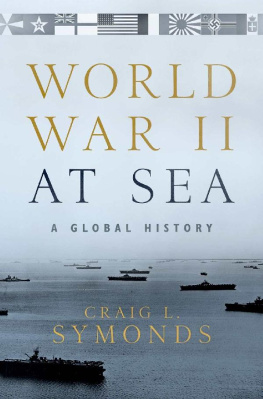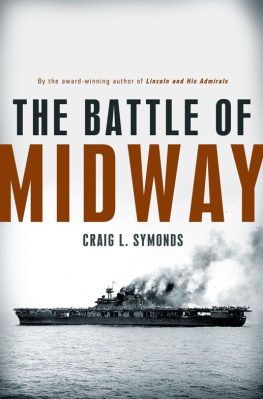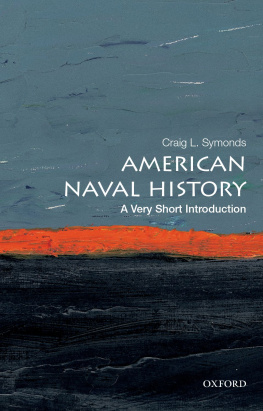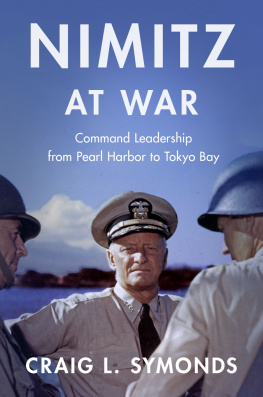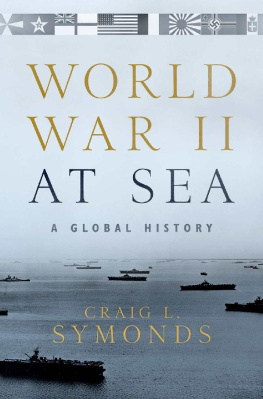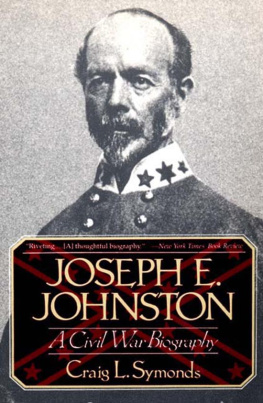Craig L. Symonds - World War II at Sea: A Global History
Here you can read online Craig L. Symonds - World War II at Sea: A Global History full text of the book (entire story) in english for free. Download pdf and epub, get meaning, cover and reviews about this ebook. year: 2018, publisher: Oxford University Press, genre: History. Description of the work, (preface) as well as reviews are available. Best literature library LitArk.com created for fans of good reading and offers a wide selection of genres:
Romance novel
Science fiction
Adventure
Detective
Science
History
Home and family
Prose
Art
Politics
Computer
Non-fiction
Religion
Business
Children
Humor
Choose a favorite category and find really read worthwhile books. Enjoy immersion in the world of imagination, feel the emotions of the characters or learn something new for yourself, make an fascinating discovery.
- Book:World War II at Sea: A Global History
- Author:
- Publisher:Oxford University Press
- Genre:
- Year:2018
- Rating:4 / 5
- Favourites:Add to favourites
- Your mark:
- 80
- 1
- 2
- 3
- 4
- 5
World War II at Sea: A Global History: summary, description and annotation
We offer to read an annotation, description, summary or preface (depends on what the author of the book "World War II at Sea: A Global History" wrote himself). If you haven't found the necessary information about the book — write in the comments, we will try to find it.
World War II at Sea: A Global History — read online for free the complete book (whole text) full work
Below is the text of the book, divided by pages. System saving the place of the last page read, allows you to conveniently read the book "World War II at Sea: A Global History" online for free, without having to search again every time where you left off. Put a bookmark, and you can go to the page where you finished reading at any time.
Font size:
Interval:
Bookmark:
Craig L. Symonds


Oxford University Press is a department of the University of Oxford. It furthers the Universitys objective of excellence in research, scholarship, and education by publishing worldwide. Oxford is a registered trade mark of Oxford University Press in the UK and certain other countries.
Published in the United States of America by Oxford University Press 198 Madison Avenue, New York, NY 10016, United States of America.
Craig L. Symonds 2018
All rights reserved. No part of this publication may be reproduced, stored in a retrieval system, or transmitted, in any form or by any means, without the prior permission in writing of Oxford University Press, or as expressly permitted by law, by license, or under terms agreed with the appropriate reproduction rights organization. Inquiries concerning reproduction outside the scope of the above should be sent to the Rights Department, Oxford University Press, at the address above.
You must not circulate this work in any other form and you must impose this same condition on any acquirer.
Library of Congress Cataloging-in-Publication Data
Names: Symonds, Craig L., author.
Title: World War II at sea : a global history / Craig L. Symonds. Description: New York : Oxford University Press, [2018] |
Includes bibliographical references.
Identifiers: LCCN 2017032532 | ISBN 9780190243678 (hardback : alk. paper) ebook ISBN 9780190243692
Subjects: LCSH: World War, 19391945Naval operations Classification: LCC D770 .S87 2018 | DDC 940.54/5dc23 LC record available at https://lccn.loc.gov/2017032532
1 3 5 7 9 8 6 4 2
Printed by Sheridan Books, Inc., United States of America
For Marylou, again
 Contents
Contents 
The second world war was the single greatest cataclysm of violence in human history. Some sixty million people lost their livesabout 3 percent of the worlds population. Thanks to scholars and memoirists of virtually every nation, it has been chronicled in thousands, even hundreds of thousands, of books in a score of languages.
Many of those books document the naval aspects of the war. Unsurprisingly, the winners have been more fulsome than the vanquishedStephen Roskill and Samuel Eliot Morison emphasized the particular contributions of the Royal Navy and the United States Navy in multivolume sets. Others have examined the role of navies in a particular theater or a particular battle, especially in the Mediterranean and the Pacific. Yet no single volume evaluates the impact of the sea services from all nations on the overall trajectory and even the outcome of the war. Doing so illuminates how profoundly the course of the war was charted and steered by maritime events.
Such is the ambition of this work, and it is one with challenges. The story of the global war at sea between 1939 and 1945 is a sprawling, episodic, and constantly shifting tale of conflicting national interests, emerging technologies, and oversized personalities. Telling it in a single narrative is daunting, yet telling it any other way would be misleading. There was not one war in the Atlantic and another in the Pacific, a third in the Mediterranean, and still another in the Indian Ocean or the North Sea. While it might simplify things to chronicle the conflict in such geographical packets, that was not the way the war unfolded or the way decision-makers had to manage it. The loss of shipping during the Battle of the Atlantic affected the availability of transports for Guadalcanal; convoys to the besieged island of Malta in the Mediterranean meant fewer escorts for the Atlantic; the pursuit of the battleship Bismarck drew forces from Iceland and Gibraltar as well as from Britain. The narrative here, therefore, is chronological. Of course, leaping about from ocean to ocean day to day is both impractical and potentially bewildering, so there is necessarily some chronological overlap between chapters.
Whenever possible, I allow the historical actors to speak for themselves, for my goal in this book is to tell the story of World War II at sea the way contemporaries experienced it: as a single, gigantic, complex story, involving national leaders and strategic decision-makers, fleet commanders and ship drivers, motor macs, gunners, pilots, merchant seamen, and Marines; as a worldwide human drama that had a disproportionate and lasting impact on the history of the world.
London, 1930
The murmur of conversation ceased abruptly and there was a rustle of movement as the assembled delegates stood when King George entered the Royal Gallery, followed by the lord chamberlain and the prime minister. The king walked slowly but purposefully toward the ornate throne that dominated one end of the House of Lords, and he waited there while the delegates resettled themselves. That he was here at all was noteworthy, for George V had been ill for some time (very likely with the septicemia that would later kill him) and had retired to Craigweil House, in Bognor, on the Sussex coast, to recuperate. Unhappy and frustrated by his confinement there, he had made a special effort to be present for this ceremony.
The House of Lords, with its gilded coffered ceiling and stained glass windows, offered a suitable stage for the kings public reappearance, though the windows admitted little light on this occasion because on January 20, 1930, London was blanketed by a thick fog; local authorities had been compelled to turn on the streetlights in the middle of the day. The hall was crowded, not with peers of the realm, but with more than a hundred delegates from eleven nations. Six of those nations were dominions within Britains far-flung empire, including Canada, Australia, and New Zealand, though the audience also boasted representatives from the military powers of three continents. From Europe there were delegates from both France and Italy (though, significantly, not from either Weimar Germany or communist Russia). In addition to Canada, a delegation from the United States represented the Western Hemisphere, and from Asia there was a substantial contingent from the Empire of Japan, though not from China. Each delegation was headed by a high-ranking civilian, and the audience included two prime ministers, two foreign secretaries, and one secretary of state. The menand they were all menwere mostly in their fifties and sixties, and they constituted a somber audience in their dark suits with stiff white collars.
Scattered among them, however, and lined up across the back of the hall, were the uniformed officers of a dozen navies, the fat and narrow gold stripes ascending their sleeves from cuff to elbow revealing their exalted rank. There was less variation in their attire than might have been expected from such a polyglot assemblage because all of them, including the Japanese, wore uniforms modeled on the Royal Navy prototype: a double-breasted dark blue (officially navy blue) coat with two vertical rows of gold buttons. Here was unmistakable evidence of the extent to which the Royal Navy was the archetype of all modern navies.
Many of the officers also wore gaudy decorationsstars and sashesearned over a lifetime of service at sea and ashore, and the bright splashes of color among the dark suits suggested songbirds among ravens. Even the junior officers, tasked with note-taking, translating, and providing technical support, stood out by sporting thick aiguillettes of gold braid draped over their shoulders and across their chests, ornamentation that identified them as belonging to the staff of one or another of the gold-striped admirals.
Font size:
Interval:
Bookmark:
Similar books «World War II at Sea: A Global History»
Look at similar books to World War II at Sea: A Global History. We have selected literature similar in name and meaning in the hope of providing readers with more options to find new, interesting, not yet read works.
Discussion, reviews of the book World War II at Sea: A Global History and just readers' own opinions. Leave your comments, write what you think about the work, its meaning or the main characters. Specify what exactly you liked and what you didn't like, and why you think so.

